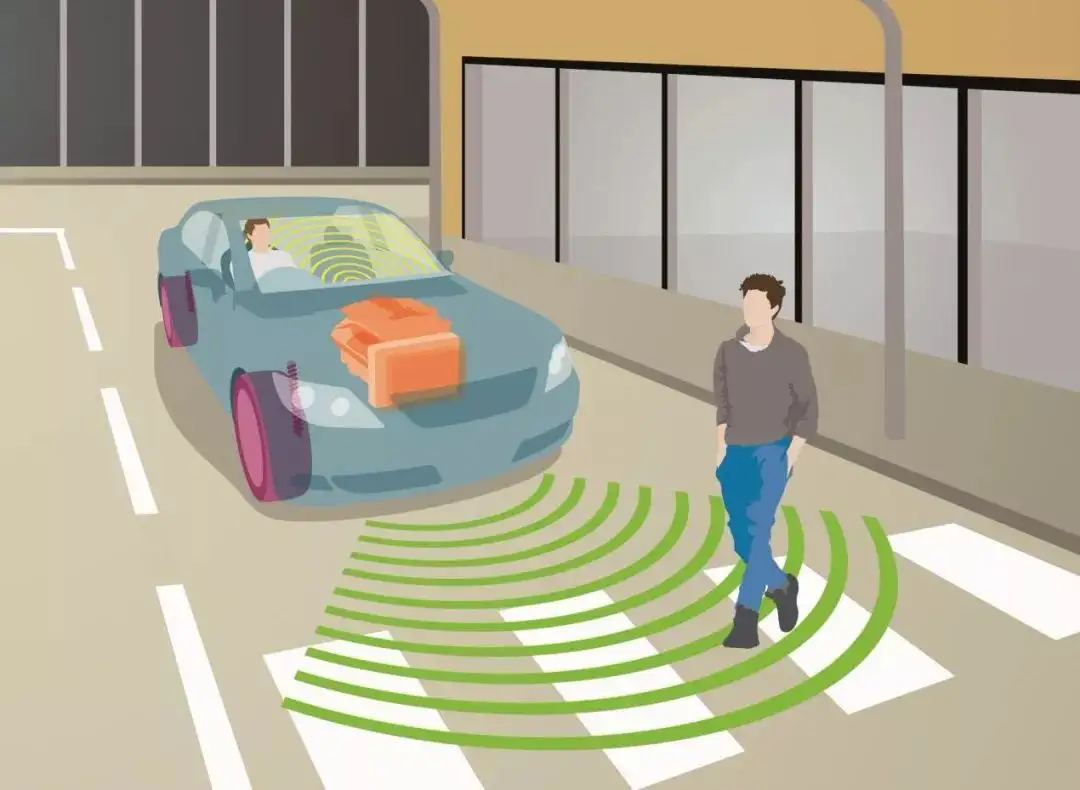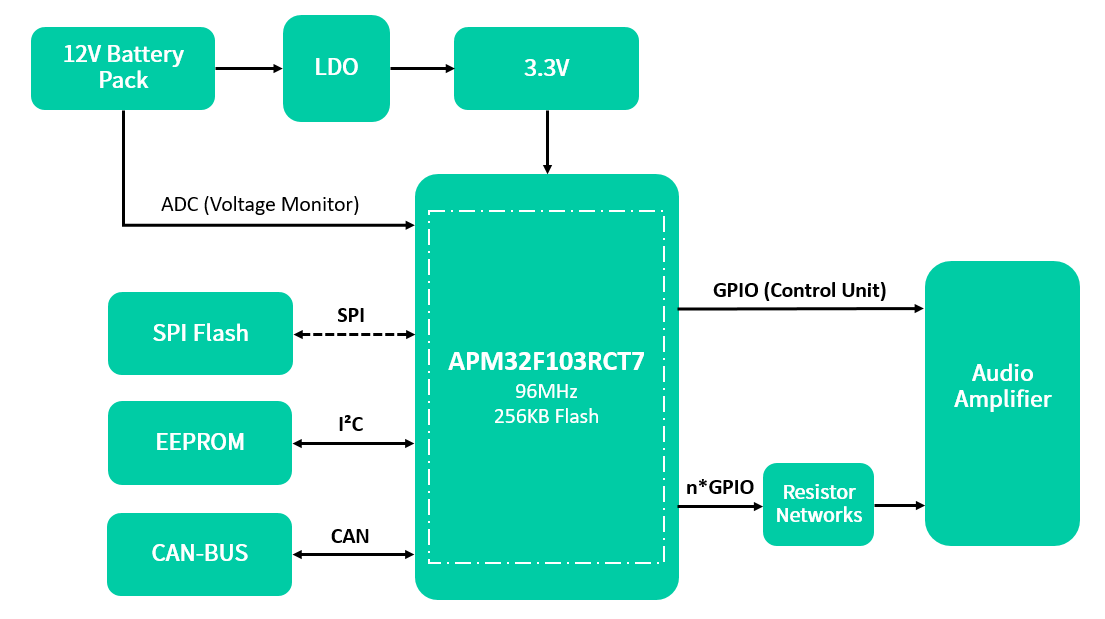To improve road users' perception when start driving, many countries have introduced policies to develop electric vehicles with Acoustic Vehicle Alert Systems (AVAS) to reduce the probability of road traffic accidents.
AVAS System Working Principle
Getting the speed and gear information through the CAN bus, the AVAS is designed to emit warning sounds when the electric vehicle is in low speed and reverse gear. When the vehicle speed is lower than the set value (20km/h), the system will simulate the sound of engine acceleration and deceleration and send out a reverse warning when in reverse gear to alert pedestrians to the presence of electric vehicles.

APM32F103RCT7 AVAS Solution
▪ Based on Arm® Cortex®-M3 core with 96MHz main frequency, the AVAS system can process CAN message in time and reduce the frame loss caused by poor processing efficiency.
▪ The built-in CAN bus receives commands, accurately identifies the current driving status, and sends the requiredaudio commands in time.
▪ Support automotive diagnostic protocols, getting real-time feedback on AVAS product status.
▪ Integrated 256KB Flash with rich storage space and the built-in SPI interface can be connected to high-capacity SPI NOR Flash components on demand.

▪ The EEPROM can be connected to built-in I²C to store diagnostic CAN messages.
▪ High ADC sampling accuracy can assist in detecting automotive battery pack voltage to achieve real-time protection of the system and battery pack.
▪ Rich communication peripherals, support multiple SPI/I²C, and extended dual CAN-Bus meet the user's diverse needs for system development
▪ Support timer PWM module; use GPIO analog control external devices to achieve low-cost sound function.
▪ Temperature range from -40~105℃, meeting the requirements of the conventional vehicle application environment.
▪ Certified ACE-Q100, comply with automotive-grade high-reliability standards.









